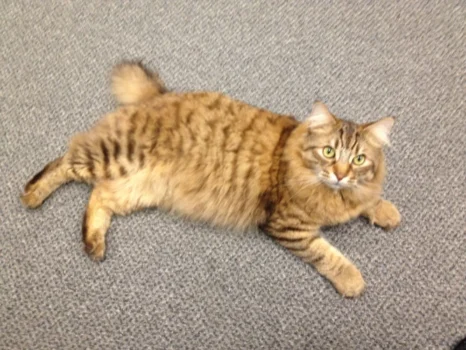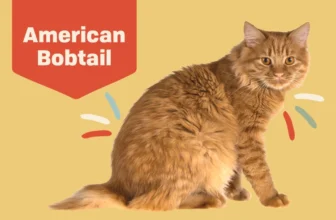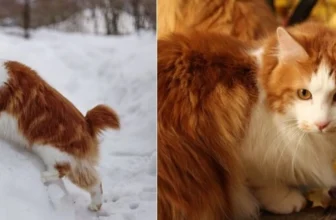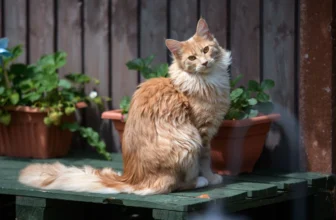As a feline enthusiast, you may have come across the distinctive American Bobtail breed in your quest for a feline companion. The American Bobtail is known for its striking physical traits and peculiar personality. However, like every other living creature, American Bobtails are susceptible to certain factors that affect their adaptability. From environmental factors to nutrition and grooming, this article delves into the various aspects that influence an American Bobtail’s ability to adjust to its surroundings. Read on to discover the essential factors that all American Bobtail cat owners should be aware of.
Physical Traits of American Bobtails
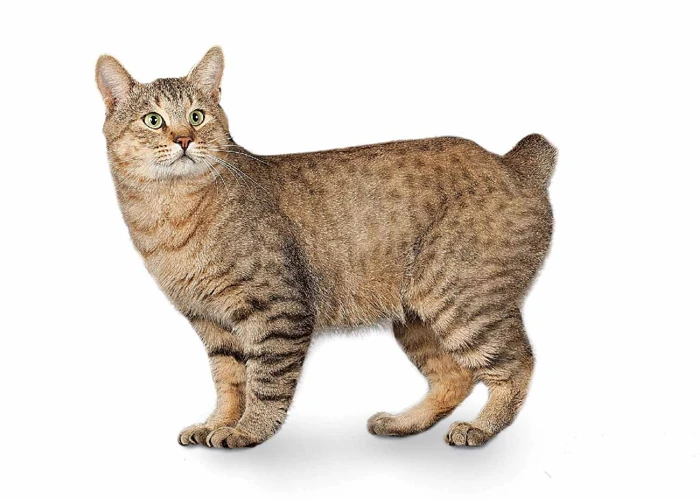
It’s no secret that American Bobtails are unique cats, and their physical traits are a huge part of that. From their sturdy body structure to their distinctive coat patterns, American Bobtails are instantly recognizable. Their most well-known feature, of course, is their short, bobbed tail. But what effect do all of these physical traits have on the adaptability of American Bobtails? Let’s take a closer look at their body structure, coat patterns, and tail characteristics to discover how these physical traits contribute to their overall adaptability. For more information on their overall adaptability and how they handle different environments, check out this article.
Body Structure
American Bobtails have a distinct body structure that sets them apart from other felines. Their body is muscular and athletic, with a well-proportioned head and a broad chest. They have strong legs that end in round paws, perfect for grasping and climbing. Their hind legs are longer and more muscular than their front legs, which gives them the ability to jump and pounce with ease.
One of the most unique features of American Bobtails is their short, stubby tail, which is only one-third the length of a regular cat’s tail. This tail is not the result of docking or any other human intervention but is instead a naturally occurring genetic mutation. The tail can be straight, curved or kinked, and it is covered in thick fur, just like the rest of the cat’s body.
Additionally, American Bobtails have large, expressive eyes that are usually amber, blue or green in color. Their ears are medium to large in size and are tipped slightly forward. They have a broad forehead and a strong, straight nose. All of these physical traits combine to give American Bobtails a distinctive look that is sure to turn heads.
Due to their muscular physique and athletic abilities, American Bobtails require regular exercise to keep them in top shape. Playing with toys or climbing structures will help keep them physically active and mentally stimulated. Additionally, a balanced diet that provides them with all the necessary nutrients is essential for their overall health and wellbeing.
In conclusion, American Bobtails are a breed with a unique and attractive physical appearance. Their muscular build and short, stubby tail make them stand out from other felines. They require regular exercise, a balanced diet, and proper grooming to remain healthy and happy. Understanding their physical traits is essential for providing them with the best possible care.
Coat Pattern and Texture
The coat pattern and texture of American Bobtails is an essential physical aspect that affects their adaptability. The breed has a shaggy and dense coat that comes in various colors and patterns. The coat of an American Bobtail can be short or long, and the texture can range from soft to wiry. A distinctive feature of these cats’ coat is that it is water-resistant, allowing them to stay dry even when they roam in damp environments.
The coat pattern of American Bobtails is unique and varies from cat to cat. Some have solid colors or bold stripes, while others have spotted or marbled patterns. The most common coat colors of American Bobtails are brown, black, white, and orange. Some American Bobtails have bi-colored or tri-colored coats, creating a striking appearance that stands out.
The coat pattern and texture can affect the adaptability of American Bobtails in various ways. For example, a dense and shaggy coat protects these cats from harsh environments, making them adaptable to various weather conditions. They can survive in cold environments such as the northern states or warm climates, such as the southern states.
However, the American Bobtail’s coat also requires a certain level of grooming. Long-haired American Bobtails require frequent brushing to prevent matting and tangling of their fur. Short-haired American Bobtails require less grooming, but regular brushing helps remove loose hair and distribute skin oils, making their coat look shiny and healthy.
American Bobtails are adaptable to different living environments, including homes with other pets and children. It is crucial to socialize them early in life and consistently throughout their lives. Socializing them ensures that they develop good behavior and relationships with others. A well-socialized American Bobtail is less likely to become stressed or competitive, making them adaptable to various situations and living environments.
The coat pattern and texture of American Bobtails play a significant role in their adaptability. Their dense and shaggy coat protects them from harsh environments, allowing them to adapt to various weather conditions. However, the coat also requires a certain level of grooming, and socialization is crucial for their good behavior and adaptability in different living environments.
Tail Characteristics
The American Bobtail breed is known for its short and bushy tail, which is a defining characteristic of the breed. While the tail’s appearance may vary from cat to cat, there are some general tail characteristics that are common in American Bobtails.
Length: The length of an American Bobtail’s tail ranges from 1-4 inches. It is important to note that the tail should never be docked or shortened as it is a natural part of the breed’s anatomy.
Shape: The shape of the tail should be slightly curved, thick at the base, and tapering towards the tip. It should not be too thin, as this is a sign of a weak tail.
Mobility: The tail should be highly mobile and expressive, as it is a key component of the breed’s communication system. An American Bobtail will often use its tail to show excitement, fear, or aggression.
It is crucial to note that an American Bobtail’s tail is more than just a physical trait. It plays a significant role in the breed’s adaptability and ability to communicate with its environment. It is essential to maintain the tail’s health and mobility through regular grooming and exercise.
If you are considering adding an American Bobtail to your family, it is essential to create an adaptable environment for the cat, considering factors beyond just tail characteristics. To learn more about what type of living environment is best suited for an American Bobtail, visit /american-bobtails-environments/. Additionally, if you plan on traveling with your American Bobtail, it is crucial to understand how to travel safely with pets. Learn more about traveling with American Bobtails here: /american-bobtails-travel-pets/.
Personality and Temperament
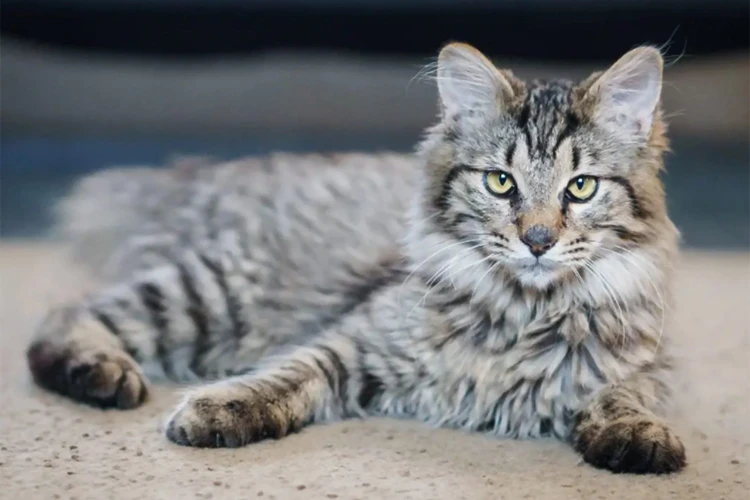
As much as physical traits of American Bobtails play a major role in their adaptability, their personality and temperament also significantly impact how they adjust to different situations. When getting a new pet, it’s essential to know what its personality traits are and how quickly it can adapt to new environments. American Bobtails have unique personalities that set them apart from other cat breeds, which makes them a great companion for families, especially those who have children. Let’s delve into some of the factors that affect the personality and temperament of American Bobtails.
Intelligence
When it comes to intelligence, American Bobtails are certainly not lacking. These cats exhibit a strong problem-solving ability and have a keen sense of their surroundings. In fact, some American Bobtail owners have reported that their cats have been able to figure out how to open doors, cabinets, and even zippers all on their own.
Intelligence Factors
| Factors | Description |
|---|---|
| Observation Skills | American Bobtails are alert, curious, and aware of their surroundings, which makes them excellent observers. They are quick to pick up on changes in their environment, allowing them to adapt easily. |
| Problem-Solving Ability | American Bobtails are not just observant, they also have a knack for problem-solving. Due to their intelligence level, they can easily figure out how to open doors or solve other puzzles they encounter. |
| Memory Skills | American Bobtails have a good memory that enables them to remember people, places, and things. This can help them adapt better to changes in their environment, and they love when familiar people give them attention. |
It’s important to keep their intelligent mind stimulated through toys or interactive play. This can help keep them engaged and avoid boredom.
Their intelligence makes them adaptable in many different environments, including those with children, other pets or even in newly adapted homes. They are quick learners and have a natural curiosity, which makes them a joy to train and interact with.
Trainability
American Bobtails are known for their high level of trainability, making them ideal pets for families that want to teach their cats new tricks. These cats are intelligent and can learn quickly, but their cooperation depends on a few factors.
Socialization: Cats that are socialized at a young age tend to be more trainable as they are familiar with different people, animals, and environments. It’s important to introduce your American Bobtail to various stimuli during their kittenhood, so they feel comfortable with different experiences.
Positive Reinforcement: Training your Bobtail with positive reinforcement is the most effective way to encourage them to learn new things. Rewarding them with treats or praise for desired behavior will likely lead to positive results.
Patience: Patience is crucial when training any pet, and American Bobtails are no exception. Because they are highly intelligent, they can become bored easily if the training sessions are too long or repetitive.
Consistency: Consistency is key in teaching your Bobtail new behaviors. They are creatures of habit, so it’s necessary to follow the same training routine daily.
Commendable Comparability: American Bobtails can be compared with other highly trainable cat breeds such as Siamese and Burmese. Because of their trainability, they are often used in commercials and television shows.
Keep in mind that individual cats have their own personalities and adaptability levels. While some Bobtails may learn quickly and follow commands, others may take a bit more time. Be patient and understanding, and your Bobtail will eventually learn the tricks you want them to perform.
In case you need to move your American Bobtail to a new home, the process might be easier if your cat has good trainability skills. You can learn more about the adaptable environment that will work best for your pet here: /adaptable-environment-american-bobtail/.
Sociability
When choosing a breed of cat, it is important to consider their sociability. American Bobtails are known for their friendly and social dispositions, making them great family pets. They are playful and curious, and typically enjoy being around people. However, some American Bobtails may be more reserved or independent, and it’s important to understand their individual personalities.
Sociability of American Bobtails
| Sociability | Description |
| — | — |
| Friendly | American Bobtails are generally friendly and enjoy being around people. They are often described as loyal and affectionate, and enjoy spending time with their owners. |
| Playful | American Bobtails are known for their playful personalities. They enjoy interactive playtime and games, and are often curious about their environment. |
| Independent | While American Bobtails are social creatures, some may also have independent streaks. They can be content with alone time or playing on their own. |
| Adaptability | American Bobtails are adaptable and can do well in a variety of environments. They often enjoy meeting new people and exploring new spaces. |
It’s important to note that each individual American Bobtail may have their own unique personality and sociability. Some may be more outgoing and active, while others may be more laid-back and relaxed.
If you’re considering adding an American Bobtail to your family, it’s important to create a welcoming and comfortable living environment for them. This can help them feel more at ease and confident in their surroundings. Consider providing plenty of playtime and interaction, as well as opportunities for alone time and relaxation.
Looking for a New Home for Your American Bobtail?
If you’re looking to rehome your American Bobtail, it’s important to find a new owner who can provide them with the love and care they deserve. Consider working with a local animal rescue organization or reaching out to cat lovers in your area. By finding the right home for your cat, you can help ensure that they stay happy and healthy for years to come.
If you’re interested in adopting an American Bobtail, make sure to do your research and find a reputable breeder. You may also want to consider adopting from a local animal shelter or rescue organization.
Learn More about American Bobtails and Their Adaptability
If you’re interested in learning more about American Bobtails and their adaptability, check out our article comparing their adaptability to other cat breeds (/american-bobtails-adaptability-comparison/). You can also find more information about adopting an American Bobtail as a family pet (/adaptability-american-bobtails-family-pets/).
Environmental Factors
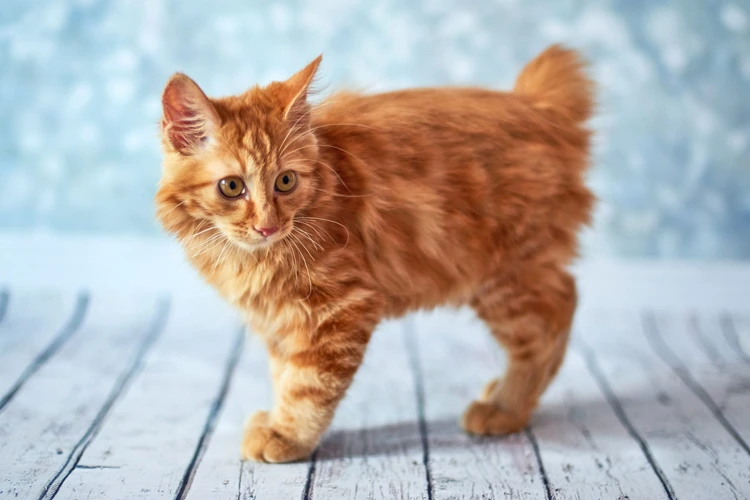
One of the critical aspects affecting the adaptability of American Bobtails is their surrounding environment. These feline creatures require certain specific elements in their habitat to feel comfortable and secure. Transitioning to a new home or environment can also be a significant adjustment for them. In the following sections, we will explore various environmental factors that directly impact the well-being and adaptability of American Bobtails.
Living Environment
The living environment plays a critical role in determining the adaptability of American Bobtails. These cats are known to thrive in different types of homes, but there are a few things to keep in mind to ensure their comfort and happiness.
Space: American Bobtails are muscular cats that require enough space to stretch and play. They do well in houses or apartments with enough space for them to move around. A house with a backyard can be an excellent option for Bobtails where they can run around and play to their heart’s content.
Temperature: American Bobtails usually adapt well to different temperatures but prefer not to be in extremely hot or cold temperatures. If you are living in an area with a fluctuating temperature, ensure that your home is temperature-controlled, and there is enough warmth during winters.
Privacy: As descendants of wildcats, American Bobtails value their privacy and alone time. Ensure that there is enough vertical space for them to climb, perch, and retreat to when they want to be alone.
Cat-friendly environment: American Bobtails are social cats and do well in environments that offer them companionship and opportunities to play. Consider providing them with toys, scratch posts, and beds to make their living space comfortable.
It is essential to keep in mind that different cats have different needs; while some American Bobtails may adapt well to a busy household, others may prefer a quieter, more relaxed environment. Ensure that you know your cat’s needs and adjust your living environment accordingly.
If you’re planning to move to a new home, it is essential to make sure that the new environment is suitable for your American Bobtail. You can help them settle in by introducing them to different spaces gradually. Keep their favorite toys, food, and bedding to make them feel more comfortable in the new surroundings.
Moving to a new home with your American Bobtail? Check out our article about how to help your cat adjust to a new environment.
| Factors | Living Environment |
|---|---|
| Space | Require enough space to stretch and play |
| Temperature | Prefer not to be in extremely hot or cold temperatures |
| Privacy | Value their privacy and alone time; provide them with enough vertical space |
| Cat-friendly environment | Do well in environments that offer them companionship, toys, scratch posts, and beds |
New Environment
When it comes to moving to a new environment, American Bobtails can experience a variety of challenges that may lead to difficulty in adaptation. These challenges may include a new living space, new people or animals, and new surroundings.
No familiar territory: Cats are known for their territorial instincts and may feel uneasy or threatened in unfamiliar surroundings. It is vital to provide a safe space for your American Bobtail in their new home. Start by confining them to a smaller part of the house, gradually allowing them access to the rest of the house over time.
Meeting new people: When your American Bobtail encounters new people, they may feel shy, scared or anxious. Let them settle in before introducing them to new faces. Encourage guests to take their time and approach them slowly to help them feel more comfortable.
Limited interaction with other animals: If there are other pets in the house, it is essential to introduce them slowly to prevent misunderstandings or hostility. Keep all interactions supervised, and be patient with your American Bobtail as they adjust to their new furry friends.
Unfamiliar sounds and smells: A new environment brings new sounds and smells that may make your American Bobtail feel scared or intimidated. It is essential to create a peaceful and secure environment by providing plenty of hiding spaces, such as cozy beds or cat trees.
To help your American Bobtail adapt to their new environment, provide plenty of love, patience, and support during the transition. Familiarizing them with their new surroundings and routine gradually will prevent them from becoming overwhelmed and aid in their adjustment.
Seasonal Changes
Seasonal changes can have a significant impact on the adaptability of American Bobtails. Here are some key factors to keep in mind:
- Temperature: Extreme temperatures can be challenging for American Bobtails, especially since they have a thick coat of fur that can make them more sensitive to heat. Ensure that your home is equipped with appropriate heating and cooling systems to keep your cat comfortable throughout the year.
- Humidity: Humidity can also affect American Bobtails, particularly when it comes to their coat. High humidity can cause their fur to become damp and matted, which can be uncomfortable and even painful. Ensure that your home has good ventilation to reduce humidity levels and consider using a dehumidifier during humid periods.
- Daylight: Changes in daylight can affect the behavior of cats, including American Bobtails. During the winter months, when daylight is shorter, some cats can become more lethargic and less active. Be aware of these changes in behavior and adjust your cat’s routine accordingly. Consider providing additional playtime and stimulation to keep them engaged and active.
- Seasonal Allergies: American Bobtails can be prone to seasonal allergies, just like humans. Keep an eye out for symptoms such as sneezing, coughing, and itching, which can indicate allergic reactions. If you suspect that your cat is suffering from allergies, consult with a veterinarian to determine an appropriate treatment plan.
- Outdoor Hazards: As the seasons change, different outdoor hazards may arise. For example, during the winter months, toxic chemicals used to melt ice can be harmful to cats. During the spring and summer, insect bites and stings can be a concern. Be aware of seasonal hazards and take appropriate measures to protect your cat.
By keeping these seasonal changes in mind, you can help ensure that your American Bobtail is able to adapt and thrive throughout the year.
Nutrition and Health
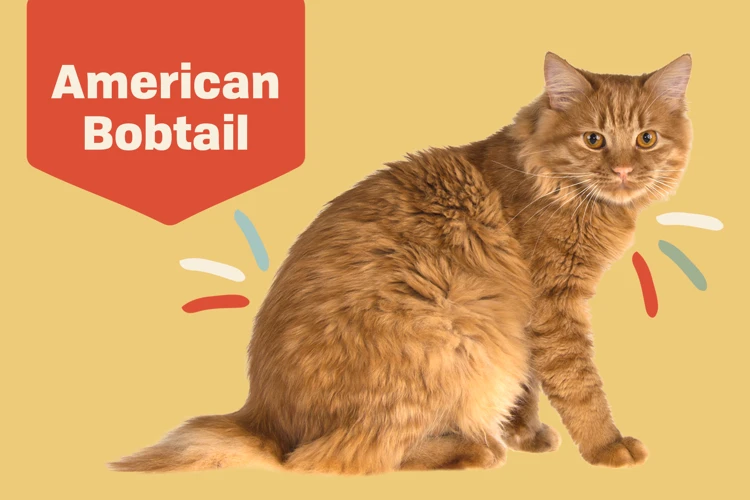
As a cat owner, one of the most important aspects of caring for your American Bobtail is ensuring that they receive proper nutrition and healthcare. How you feed and care for your pet can significantly impact their overall health, longevity, and adaptability. A healthy diet and routine check-ups with the veterinarian can help prevent illnesses and ensure that your feline companion is well-equipped to handle any environmental changes. Let’s take a closer look at the crucial factors that impact the nutrition and health of American Bobtails.
Diet
To maintain the adaptability of American Bobtails, a healthy and well-balanced diet is essential. A high-protein diet is recommended to keep their muscles strong and their energy levels high. Incorporating a variety of protein sources, such as chicken, turkey, and fish, will ensure that they receive all the necessary nutrients for optimum health.
It is also important to provide American Bobtails with a sufficient amount of water to keep them hydrated throughout the day. Owners should ensure that their cats have access to fresh and clean water at all times.
In addition to protein and water, American Bobtails need a healthy balance of carbohydrates and fats. Complex carbohydrates, found in grains and vegetables, provide energy and fiber. Fats, including Omega-3 Fatty Acids, contribute to a healthy coat and skin.
To prevent obesity and other health issues, portion control is crucial. Owners should measure their cat’s food and avoid overfeeding. Treats should only be given in moderation and should not replace regular meals.
It is important to note that each cat is different and may require their own unique diet. Owners should consult with a veterinarian to create a diet plan that is tailored to their cat’s specific needs and health conditions.
A healthy diet is essential for the adaptability of American Bobtails. Providing them with a well-balanced diet that includes protein, water, carbohydrates, and fats will ensure their optimal health and longevity.
Exercise
Regular exercise is essential for the overall well-being of American Bobtails. These cats are naturally energetic and need physical activity to stay healthy and happy. However, the amount of exercise needed may vary depending on their age, health, and other factors. Here are some guidelines to follow when considering your American Bobtail’s exercise needs:
| Type of Exercise | Frequency | Duration |
|---|---|---|
| Playtime | Daily | 15-30 minutes |
| Interactive Toys | Daily | 5-10 minutes |
| Outdoor Time | As Needed | Supervised |
| Exercise Equipment | Weekly | 10-15 minutes |
American Bobtails enjoy a variety of exercise activities, such as playing with toys that they can chase and pounce on, climbing and exploring, or running around in a safe and enclosed area. Regular playtime should be incorporated into their daily routine for at least 15-30 minutes. Interactive toys, such as laser pointers or feather wands, can provide mental stimulation and physical exercise for as little as 5-10 minutes each day.
If possible, American Bobtails should also be given supervised outdoor time for exercise and fresh air. However, it is important to note that they should only be allowed outside in a secure and safe environment, away from busy roads and other hazards.
There are also a variety of exercise equipment options available for cats, such as climbing trees or scratching posts. These types of equipment not only provide exercise but also help with mental health and behavior issues such as boredom or anxiety. Using such equipment for 10-15 minutes a week can make your American Bobtail more active and content.
It is important to note that exercise should always be tailored to fit an American Bobtail’s age and health. Older cats may not be as energetic and may need less intensive exercise routines. If your cat suffers from health issues, such as obesity or arthritis, they may require specific exercise routines recommended by a vet to keep them healthy and comfortable.
Providing regular exercise and physical activity for American Bobtails is essential for their overall well-being. A variety of exercise options and equipment can be used to keep these cats happy, healthy, and active, regardless of their age or health status.
Health Conditions
As with any breed, American Bobtails are susceptible to certain health conditions. Being aware of the potential health problems can help pet owners take preventive measures and address issues promptly. Some of the common health conditions that American Bobtails may develop include:
| Condition | Symptoms | Treatment |
|---|---|---|
| Obesity | Excessive weight gain, lethargy, difficulty breathing, increased susceptibility to other health problems | Dietary changes, regular exercise, medication (in severe cases) |
| Hypertrophic Cardiomyopathy | Abnormal heart rhythm, difficulty breathing, blood clots, loss of appetite | Medications to regulate heart rhythm, anticoagulants, dietary changes, surgery (in severe cases) |
| Urinary tract infections | Painful urination, frequent urination, blood in urine, licking genital area | Antibiotics, dietary changes, increased water consumption |
| Dental problems | Bad breath, yellow or brown teeth, inflamed gums, difficulty eating | Regular dental cleanings, dietary changes, dental surgery (in severe cases) |
It is also important to ensure that your American Bobtail is up to date on vaccinations and parasite control. Regular visits to the veterinarian can help catch any health issues early on and prevent them from becoming more serious. Maintaining a healthy diet and exercise routine can also help prevent obesity and other health problems.
Vaccinations and Treatments
Keeping up with vaccinations and regular treatments is essential in ensuring your American Bobtail’s adaptability to different environments. Some of the recommended vaccinations and treatments for American Bobtails include:
- Rabies: This is a mandatory vaccination that protects American Bobtails against the rabies virus. It is usually given to them when they are three to four months old, followed by a booster shot after one year, and then every three years thereafter.
- FVRCP: This stands for Feline Viral Rhinotracheitis, Calicivirus, and Panleukopenia. This vaccination protects American Bobtails against respiratory infections and other illnesses. It is usually given to them when they are six to eight weeks old, followed by booster shots until they are four months old, and then every one to three years thereafter.
- Feline Leukemia: This vaccination helps protect American Bobtails against the feline leukemia virus, which can cause diseases like cancer, anemia, and other fatal illnesses. It is usually given to them when they are eight to twelve weeks old, followed by a booster shot three to four weeks later. After that, boosters are given annually.
- Flea and tick prevention: Fleas and ticks can cause a lot of discomfort and even transmit diseases to American Bobtails. Preventive treatments include topical applications, oral medications, and flea and tick collars. These treatments are available in different forms and strengths, so it’s important to consult with your vet to determine the best option for your American Bobtail.
- Deworming: Deworming treatments help protect American Bobtails against intestinal parasites. Kittens should be dewormed every two to three weeks until they are four months old, and then dewormed every three to six months thereafter.
By keeping up with these vaccinations and treatments, you can help ensure the health and adaptability of your American Bobtail in different living environments. Always consult with your veterinarian to determine the best course of action for your cat’s individual needs.
Grooming
Maintaining the physical appearance and hygiene of American Bobtails is crucial for keeping them healthy and comfortable. Proper grooming can also aid in the prevention of health issues and minimize odors in the home. Taking care of an American Bobtail’s coat requires a combination of brushing, bathing, nail trimming, and dental care. It’s important to use the right techniques and products for each aspect of grooming to keep your feline friend looking and feeling their best. Let’s dive deeper into the various aspects of grooming an American Bobtail.
Brushing
Regular brushing is an essential part of American Bobtail grooming routine. It helps maintain the health of their skin and coat, prevent hairballs, and reduce shedding. While American Bobtails are generally low-maintenance in terms of grooming needs, they still require routine brushing. Here are some tips to keep your American Bobtail’s coat looking healthy and shiny:
- Choose the right brush: Depending on the length and texture of your cat’s coat, you will need a specific type of brush. For American Bobtails with short hair, a rubber curry brush or a soft-bristled brush can be used, while long-haired American Bobtails require a slicker brush and a wide-toothed comb.
- Brush regularly: Brushing your American Bobtail at least once a week will help remove dirt and loose hair from their coat. It will also help prevent mats and tangles, particularly in long-haired American Bobtails.
- Be gentle: While brushing your American Bobtail, make sure to be gentle and avoid pulling or tugging on knots. This could cause your cat discomfort or even pain, and may result in her becoming more resistant to grooming.
- Use treats to encourage good behavior: If your American Bobtail is resistant to brushing, try using treats to associate it with positive experiences. Offer treats before, during, and after brushing to train your cat to associate grooming with rewards.
- Pay attention to specific areas: Pay close attention to the areas that are more likely to get dirty or matted, such as around the ears and under the legs. Make sure to comb these areas thoroughly and remove any knots or tangles.
By following these simple tips, you can help ensure that your American Bobtail’s coat stays healthy, shiny, and free of tangles and mats. Remember, regular grooming sessions can also be a bonding experience between you and your furry friend, so take the time to make it an enjoyable experience for both of you.
Bathing
Bathing is an essential part of American Bobtail grooming. It’s necessary to bathe your American Bobtail occasionally to keep their coat healthy and shiny. It’s important to choose a good pet shampoo that is mild and does not strip the natural oils from their fur. When giving a bath to your American Bobtail, make sure you do it in a warm and quiet setting, where they feel comfortable and relaxed.
Here are some tips on how to bathe your American Bobtail:
- Prepare the bath area: It’s important to have everything you need before starting the bath. Collect shampoo, towels, and a brush, and ensure that the water in the bathtub is warm and comfortable for your American Bobtail.
- Brush the fur: Brushing your American Bobtail’s coat before the bath will help remove any mats, tangles or loose fur. This will make sure they don’t get more tangled or matted during the bath.
- Wet the coat: Wet your American Bobtail’s coat with lukewarm water, starting from their neck, and slowly work your way towards the tail. Make sure their ears and face are kept dry during this process.
- Apply pet shampoo: Apply a small amount of shampoo, starting from the neck and slowly working your way towards the tail. Gently massage the shampoo into their coat, making sure to avoid contact with their eyes and ears.
- Rinse the coat: Rinse your American Bobtail’s coat thoroughly, making sure all the shampoo is washed out. Rinse from neck to tail, and use your fingers to work through any shampoo residue while rinsing.
- Dry the coat: Dry your American Bobtail’s coat with a towel or hairdryer on low heat setting. Make sure to avoid using heat on their face and ears.
- Reward your pet: Once the bath is finished, make sure to reward your American Bobtail with their favorite treat or toy. This will create a positive association with the bathing process, making it easier for both of you the next time around.
Regular bathing will keep your American Bobtail’s coat clean and healthy, reducing the risk of infections and skin problems. However, it’s important not to overdo it. Bathing too frequently can dry out their skin and coat, leading to skin irritation and dandruff. So, unless your American Bobtail gets extremely dirty or smelly, bathe them no more than once a month.
Nail Trimming and Dental Care
Taking care of the nails and teeth of American Bobtails is crucial to their overall health and well-being. Neglecting these areas can lead to discomfort and pain, and in some cases, even infection. Here are some tips on how to properly care for your American Bobtail’s nails and teeth:
Nail Trimming:
- Use a specialized cat nail clipper to avoid injuring your cat’s paw.
- Make sure your cat is calm and comfortable before starting the trimming process. Offer treats as a distraction.
- Clip just the tip of the nail to avoid cutting the quick, which is a blood vessel inside the nail.
- If you accidentally cut the quick, apply styptic powder to the nail to help stop the bleeding.
- Trim your cat’s nails every 2-3 weeks to avoid overgrowth and discomfort.
Dental Care:
- Brush your American Bobtail’s teeth regularly to prevent plaque and tartar buildup. Use a toothbrush and toothpaste specifically designed for cats.
- Start dental care at a young age to get your cat used to the process.
- Provide dental treats and toys to help clean your cat’s teeth and freshen their breath.
- Pay attention to any signs of dental issues such as bad breath, swollen gums, or difficulty eating. Consult with your veterinarian if you notice any of these issues.
- Take your cat for annual dental check-ups and cleanings to maintain their oral health.
By following these nail trimming and dental care tips, you can help prevent potential health issues in your American Bobtail and ensure their long-term health and happiness.
Conclusion
As can be seen from the factors affecting the adaptability of American Bobtails, there are numerous variables that come into play when determining how well this breed can adjust to new situations. From their physical traits to their personality and temperament, environmental factors, nutrition and health, and grooming needs, each aspect plays a crucial role in their ability to adapt.
It is important for anyone considering adopting or owning an American Bobtail to understand the unique characteristics of this breed, including their strong-willed nature, intelligence, and need for sociability. Providing a suitable living environment, proper nutrition and exercise, regular grooming, and timely veterinary care can all contribute to their overall wellbeing and adaptability.
Ultimately, with the proper care and attention, American Bobtails can thrive in a variety of living situations and adapt well to new environments. As with all pets, patience and commitment are key to building a strong bond and ensuring their long-term health and happiness. So, if you’re considering adding an American Bobtail to your family, it is important to prioritize their needs and set them up for success in all aspects of their lives.
Frequently Asked Questions
What is the average lifespan of American Bobtails?
The average lifespan of American Bobtails is around 12-16 years.
Do American Bobtails shed a lot?
American Bobtails shed moderately throughout the year, with heavier shedding during seasonal changes.
Are American Bobtails prone to specific health conditions?
While American Bobtails are generally healthy, they can be prone to conditions such as hip dysplasia, heart disease, and urinary tract issues. Regular vet checkups are recommended.
Do American Bobtails require a lot of exercise?
American Bobtails are active cats, but they don’t necessarily require a lot of exercise. Playtime and interactive toys can help keep them mentally and physically stimulated.
What kind of diet is best for American Bobtails?
American Bobtails thrive on a high-quality, protein-rich diet that’s appropriate for their age and activity level. Consult with a veterinarian for specific recommendations.
Do American Bobtails get along well with children and other pets?
American Bobtails are known for their friendly and social personalities, making them great companions for families with children and other pets.
How often should I groom my American Bobtail?
American Bobtails should be brushed at least once a week to remove loose hair and distribute skin oils. Bathing and nail trimming should be done as needed.
Can American Bobtails be trained to do tricks?
American Bobtails are highly intelligent and trainable cats. With patience, consistency, and positive reinforcement, they can certainly learn tricks and commands.
What’s the best way to introduce a new environment to an American Bobtail?
When introducing a new environment to an American Bobtail, it’s important to do so gradually and with positive reinforcement. Allow the cat to explore at their own pace and provide plenty of familiar items, like toys and bedding.
Are American Bobtails hypoallergenic?
No cat breed is completely hypoallergenic, but some people with allergies may have less of a reaction to American Bobtails due to their short, dense coats and relatively lower levels of the Fel d 1 protein.

